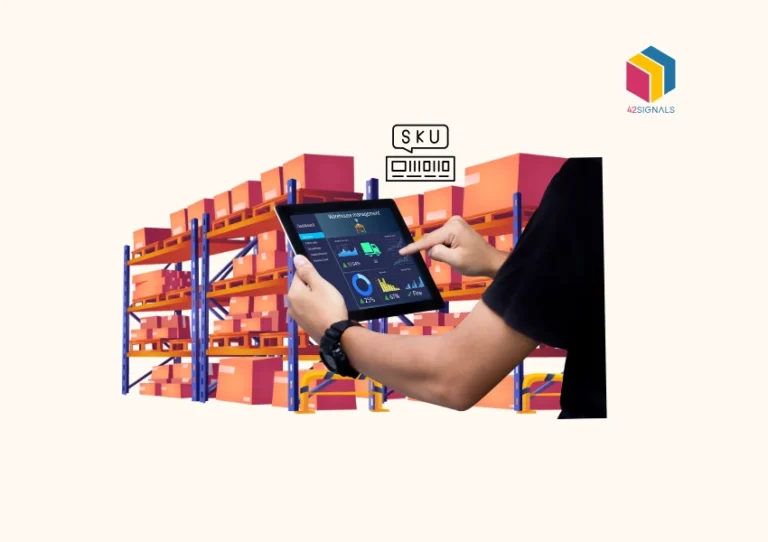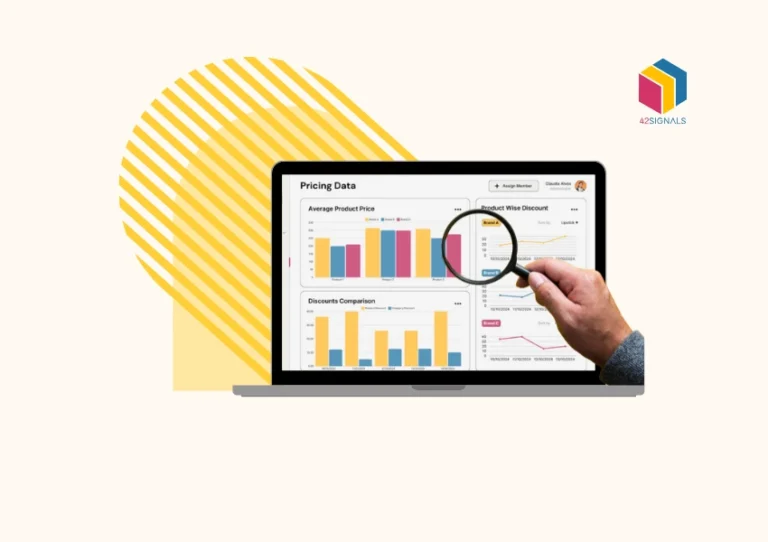What’s the need to spy on competitors? With quick commerce reshaping how consumers shop and expectations rising around seamless digital experiences, businesses need a strategic edge. ECommerce analytics provides tools and insights that enable companies to gain competitor intelligence, optimize strategies, and thrive in a crowded marketplace.
By using insights from a competitor analysis dashboard, digital shelf analytics, and ecommerce data, brands can decode competitor promotions and craft effective strategies.
Spy on Competitors: Why Competitor Intelligence Matters in eCommerce?

Image Source: Web CEO
Competitor intelligence involves gathering and analyzing data about rivals to understand their strategies, strengths, and weaknesses. In ecommerce, where pricing, promotions, and product availability can shift quickly, staying informed about competitors’ actions is essential.
Businesses that can predict trends, identify opportunities, and respond swiftly are better positioned to attract and retain customers.
A competitor analysis dashboard provides a centralized platform to monitor competitors’ activities, such as pricing changes, promotional campaigns, and inventory status. This detailed visibility allows brands to anticipate market shifts and make informed decisions to maintain their edge.
Rather than simply replicating competitors’ tactics, the goal is to interpret market dynamics and carve out a unique position.
How to Leverage eCommerce Analytics for Competitor Promotion Insights?
Promotions are a cornerstone of any ecommerce strategy, often serving as a deciding factor for shoppers who prioritize value.
ECommerce analytics empowers businesses to spy on competitors and gain actionable insights into competitor promotions by examining key metrics such as:
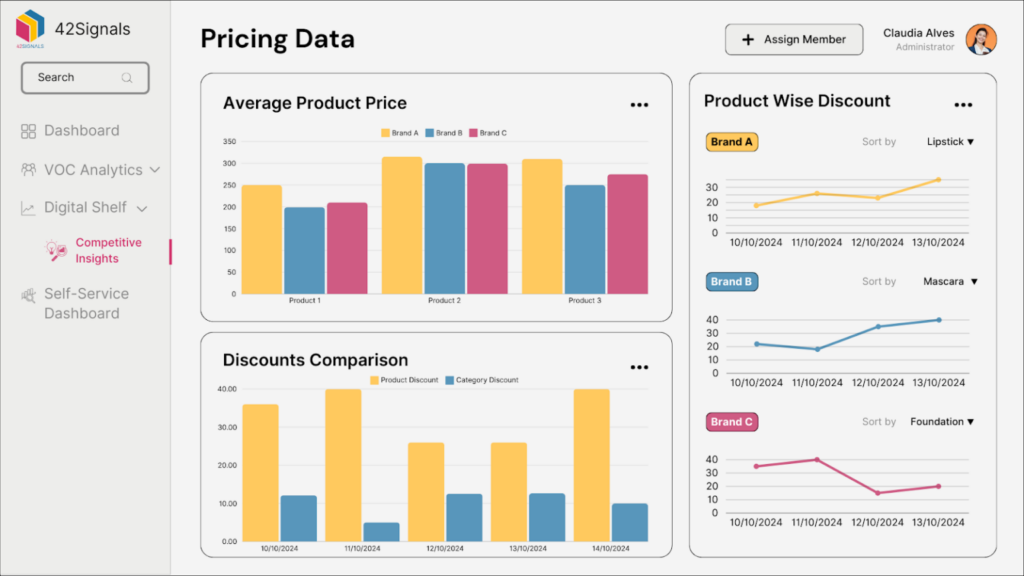
1. Pricing Strategies
By tracking competitors’ product data price changes and discount patterns, businesses can identify trends and adjust their pricing approaches. For instance, if a competitor frequently offers weekend discounts, you might explore mid-week promotions to engage a different segment of shoppers.
2. Promotion Frequency and Timing
Analyzing when competitors launch promotions can help refine your campaign calendar. Data-driven insights enable you to avoid direct competition or strategically time your offers to counteract theirs.
3. Bundling and Upselling Techniques
ECommerce analytics can reveal how competitors bundle products or use upselling methods. For example, if a rival promotes a buy-one-get-one-free offer on a popular item, you might consider a complementary product discount to attract customers.
4. Channel-Specific Campaigns
Analyzing which platforms competitors use for promotions can inform your channel strategy. Digital shelf analytics, for instance, highlights how competitors perform on major online marketplaces like Amazon or Walmart, offering insights into platform-specific promotional efforts.
How to Use Digital Shelf Analytics to Boost Your Competitive Edge?
The digital shelf helps brands spy on competitors by utilizing all the touchpoints where a customer interacts with your product online, such as product pages, search results, and reviews.

Digital shelf analytics offers a real-time perspective on how your products and those of your competitors are performing across these touchpoints. By integrating these insights, brands can:
- Enhance Product Listings: Compare product titles, descriptions, and images against competitors’ to ensure your listings stand out.
- Address Gaps in Assortment: Identify opportunities to add new products or categories based on competitor offerings and customer demand.
- Analyze Customer Feedback: Monitor reviews and ratings to understand what customers appreciate or dislike about competitors’ products and use this information to refine your offerings.
Consistently refining your ecommerce presence through digital shelf analytics can improve visibility, drive conversions, and strengthen your position in the market.
Why Your Business Needs a Competitor Analysis Dashboard?
To spy on competitors, an effective competitor analysis dashboard is the foundation of any ecommerce intelligence strategy. It brings together data from multiple sources into a user-friendly interface, enabling businesses to track performance indicators and uncover actionable insights.
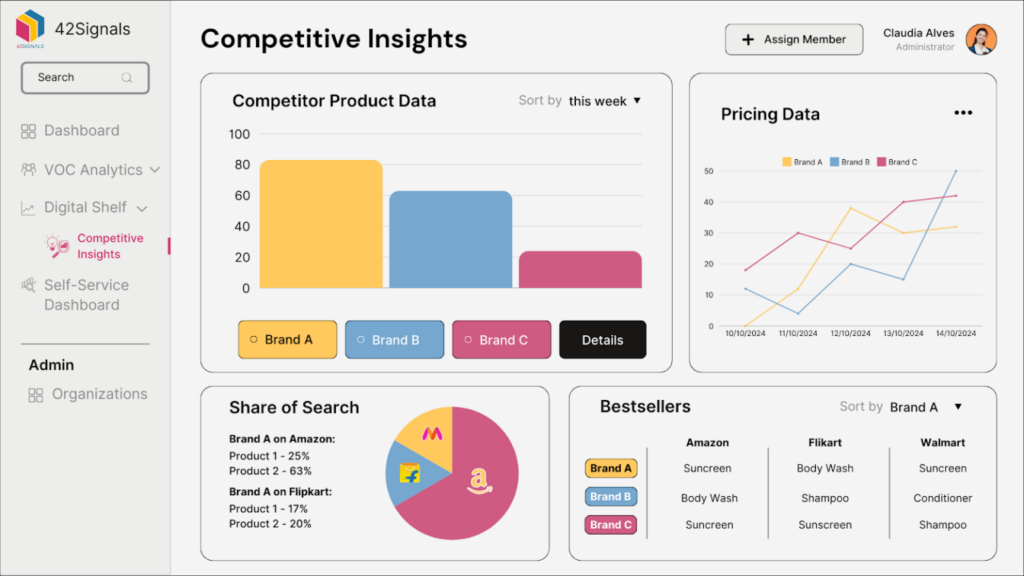
Essential components of a competitor analysis dashboard include:
- Real-Time Price Monitoring: Keep track of competitor pricing and compare it to your own to ensure competitiveness.
- Promotional Campaign Tracking: Stay informed about discounts, flash sales, and other promotional activities across different channels.
- Sales Performance Estimates: Use available ecommerce data to estimate competitors’ sales volume and revenue trends.
- Inventory Insights: Monitor competitors’ stock levels to identify opportunities when their inventory runs low.
- Search Visibility Metrics: Assess how competitors rank for specific keywords in search engines and on marketplace platforms.
By including these features, your competitor analysis dashboard becomes an indispensable resource for informed decision-making.
What Are the Benefits of Integrating Ecommerce Data for Insights?
The effectiveness of ecommerce analytics depends on the quality and comprehensiveness of the data.
Integrating various data to spy on competitors’ sources ensures a complete understanding of the market and your peers. Key data sources include:
- Marketplace Data: Analyze performance metrics from platforms like Amazon, eBay, and Walmart to understand competitors’ strategies.
- Web Traffic Analytics: Gain insights into competitors’ site traffic, referral sources, and top-performing pages.
- Social Media Engagement: Track competitors’ social media activity to identify campaigns that resonate with their audience.
- Customer Reviews: Extract sentiment analysis from reviews to identify product strengths and weaknesses.
A comprehensive approach to ecommerce data integration reveals insights that support competitive strategies.
What Role Does Quick Commerce Play in Competitive Advantage?
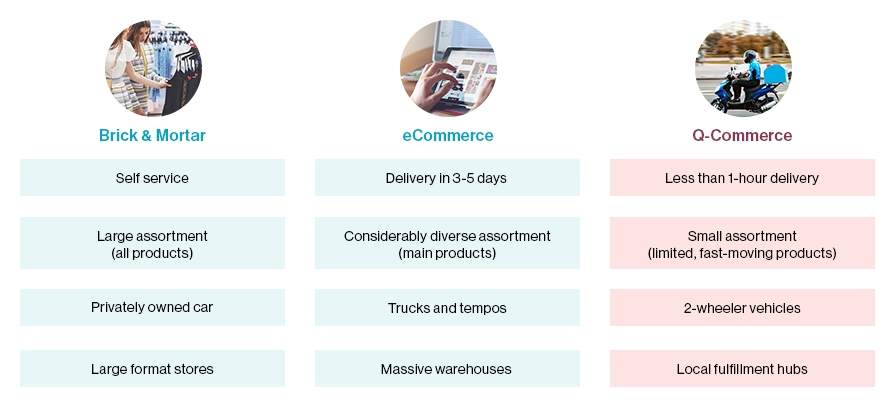
Quick commerce, which focuses on delivering goods within minutes or hours, introduces additional challenges and opportunities in competitor analysis. Businesses embracing quick commerce need to evaluate how competitors adapt to this model.
Are they offering faster delivery times? Are special promotions tied to expedited delivery options? ECommerce analytics can track delivery speed metrics and evaluate competitors’ investments in logistics to inform your strategy.
How Can You Turn Competitor Insights into Actionable Strategies?
Competitor intelligence holds value when translated into concrete actions. After gathering insights using ecommerce analytics, it’s crucial to implement changes that align with your objectives. Examples of actionable strategies include:
- Adjusting your pricing to remain competitive while protecting margins.
- Launching promotions that address gaps in competitors’ campaigns.
- Expanding your product range to cater to unmet customer needs.
- Refining your digital shelf presence to improve visibility and increase conversion rates.
Conclusion
ECommerce analytics provides the tools to spy on competitors, uncover opportunities, and stay ahead of trends. Whether through a competitor analysis dashboard, digital shelf analytics, or integrated ecommerce data, these insights empower businesses to make well-informed decisions.
42Signals provides businesses with all the tools they need to spy on competitors and leverage market intelligence to improve their operations.
If you’re curious to know how schedule a free demo with us today.

